How to sharpen a camping knife: cutting edge techniques
Our expert guide on how to sharpen a camping knife details three simple methods to get your blade back to its best
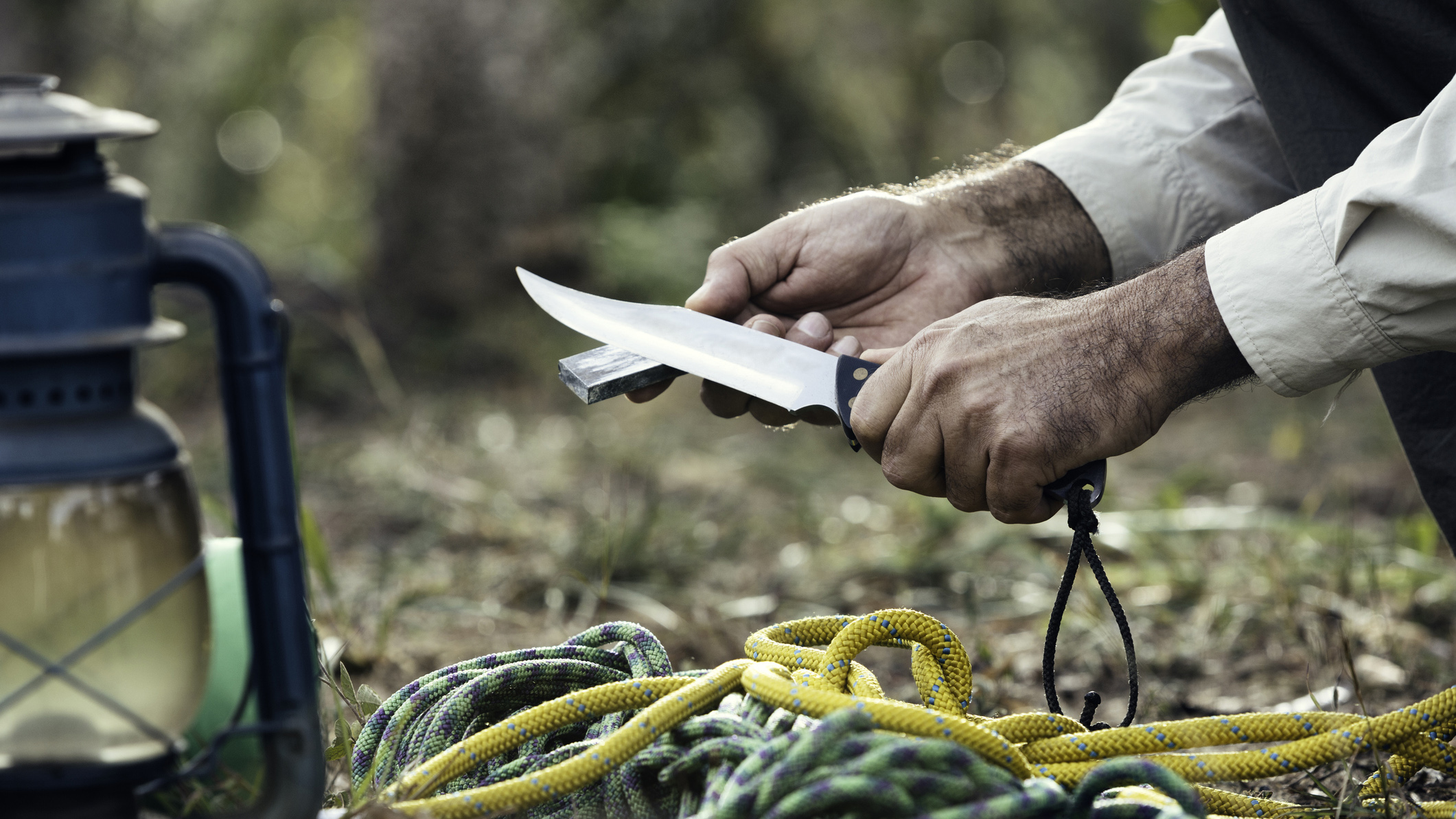
"A mind needs books like a sword needs a whetstone, if it is to keep its edge. That is why I read so much," said Tyrion Lannister in George RR Martin's Game of Thrones. It's not just swords and minds that need an edge in order to maintain their usefulness, any blade requires a sharpening once in a while. This is why knowing how to sharpen a camping knife is important, if you want your backcountry blade to maintain its performance.
After all, a good camping knife is an essential part of every camper’s kit. Whether you’re using it for food prep, whittling, trimming firewood, or preparing those all-important marshmallow roasting sticks, few items in your pack offer the same degree of practicality at so little a cost in weight.
Even the best camping knife (and the best multi tools), however, can become a whole lot less practical and useful without adequate TLC, maintenance, and regular sharpening. And while this might seem like a relatively straightforward task, there’s more to learning how to sharpen a camping knife than most expect. Did you know, for example, that not all knives should be sharpened at the same angle? Or that different types of sharpening implement should be used in different scenarios, depending on how blunt and/or burred your blade has become?
We’ll cover all of this, and more, in the following guide to how to sharpen a camping knife.
Meet the expert
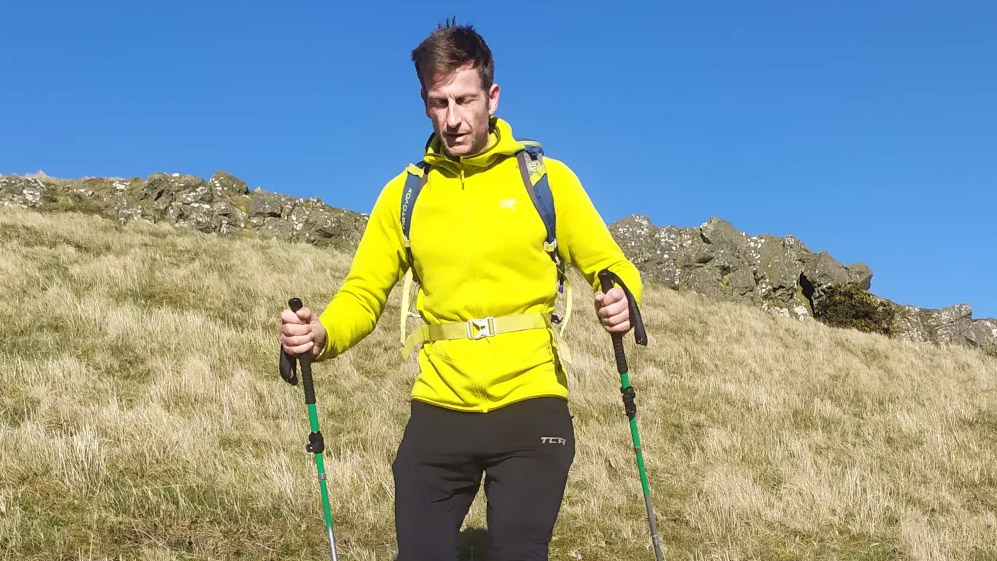
Kieran, our esteemed former editor, is a passionate rock climber, avid explorer and expert on camping kit. Here, he shares his camping knife expertise, sharing three methods to get your blade back to its best.
1) Using a whetstone
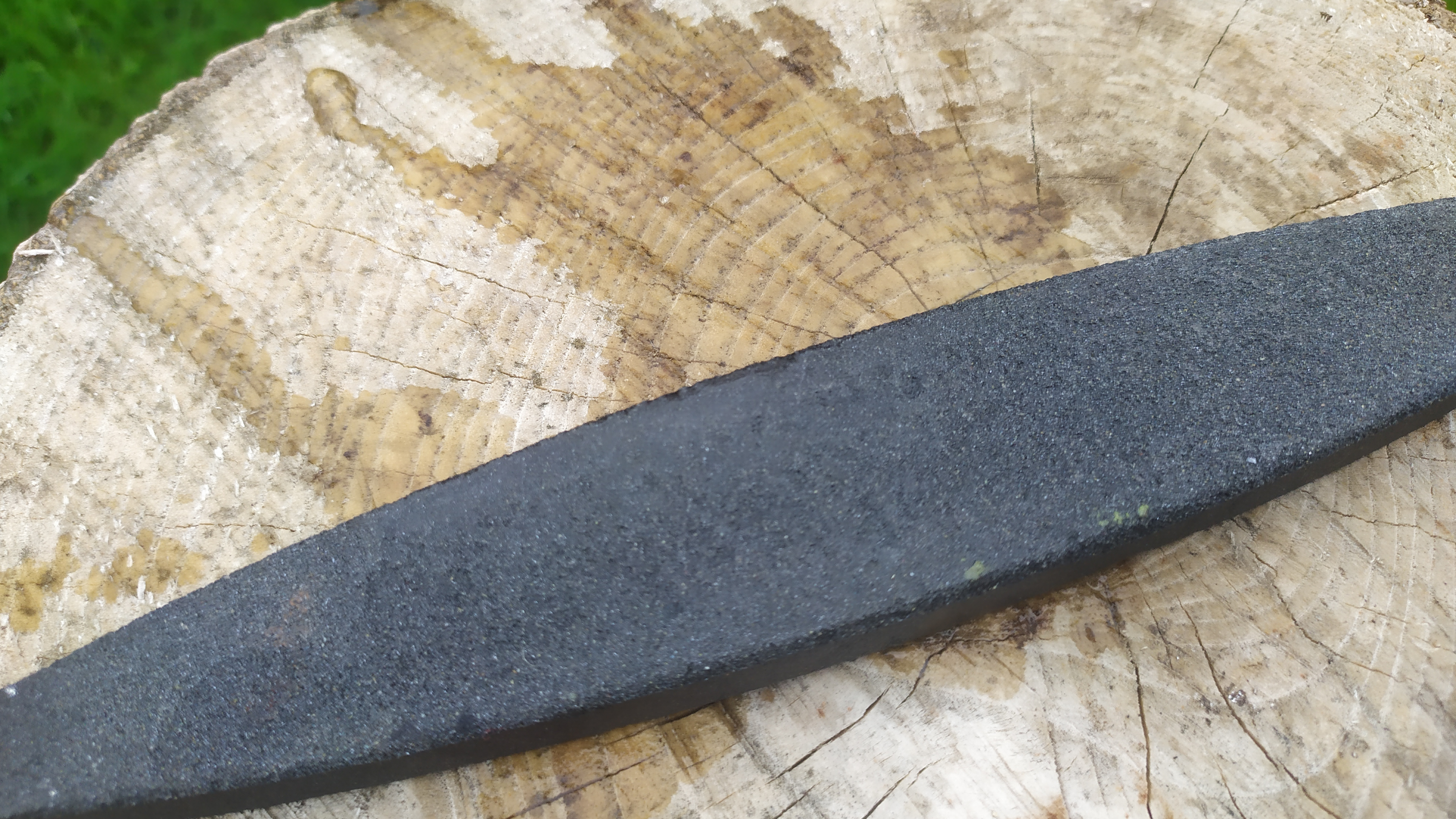
- Choose your whetstone wisely. Different types of whetstone have different sharpening capacities. If your blade is severely blunt, burred, or otherwise damaged, your best bet is to start off with a coarser grit in the 200-250 range. If the blade is only dull, then a 600-700 grit whetstone should do the trick. For fine-tuning and honing, a softer whetstone with 900-1000 grit is the way to go. For our money, the best whetstone for camping is the Fallkniven DC3 Whetstone, which has a softer grit on one side and a hard grit on the other, thus covering all angles.
- Prep your whetstone. Before you start sharpening, douse your whetstone in mineral oil or water and leave this to sit for a few minutes while the liquid soaks into the porous surface of the stone. Doing this improves the stone’s ability to sharpen while also making the stroking action in step 3 a lot smoother, thereby reducing the risk of creating more burrs or an uneven edge while sharpening.
- Adjust to the appropriate angle. Start by placing the blade flat on the whetstone and then tipping it until the edge of the blade lies against the stone at the desired angle. Most blades have an angle of roughly 20 degrees. A lesser angle will make your knife sharper, but will also require more frequent sharpening. For whittling and food prep for camp cooking, sharper’s the way to go; for general bushcraft skills and campsite use, a broader, less acute angle will suffice.
- Sharpen. Maintaining the aforementioned angle, and with the blade facing away from you, push the blade towards the opposite end of the stone. As the blade moves down the stone, take care to maintain the original angle and apply light pressure to the top of the blade. Start with the base of the blade and work up towards the tip. Repeat this process six or seven times on each side of the blade.
- Repeat. If your blade is still dull after step 4, repeat the same process with a softer, finer grit whetstone.
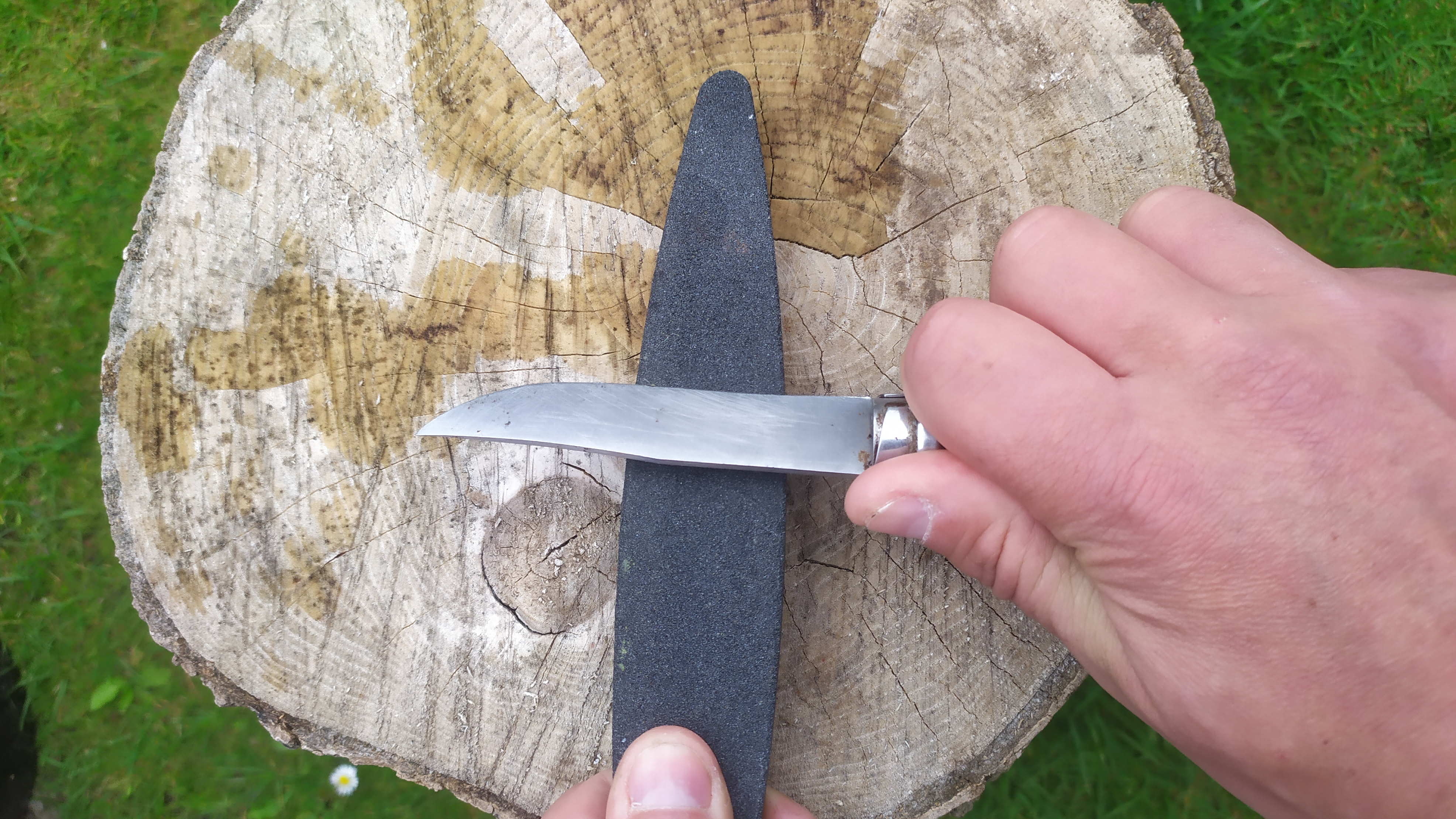
2) Using a honing rod
When using a honing rod, the most important thing is to ensure the blade is not moving in the direction of your hands or body. Here’s how it’s done:
- Plant your rod. Hold the rod vertically, with the tip planted on a solid surface and the grip in your non-dominant hand. Press the heel of the blade against the top of the rod and point the tip of your knife slightly upward. The blade should be held at a 20‑degree angle away from the steel.
- Sharpen. Slide the blade down the length of the steel while maintaining gentle pressure and the 20-degree contact angle. Pull the knife towards your body as it descends the steel, so the full length of the blade is sharpened.
- Repeat. Repeat the above 10-15 times on each side of the blade.
If you’d like to have a honing rod with you on your trips, we’d highly recommend the Sharpal 6-in-1 Pocket Knife, which has a miniature rod among its 6 instruments.
3) Using a rock (or two)
- The best rocks for sharpening are usually found near rivers
- This is because they've been smoothed to a fine grain that's ideal for sharpening
- Once you've sourced your rocks, the process is the same as the whetstone method
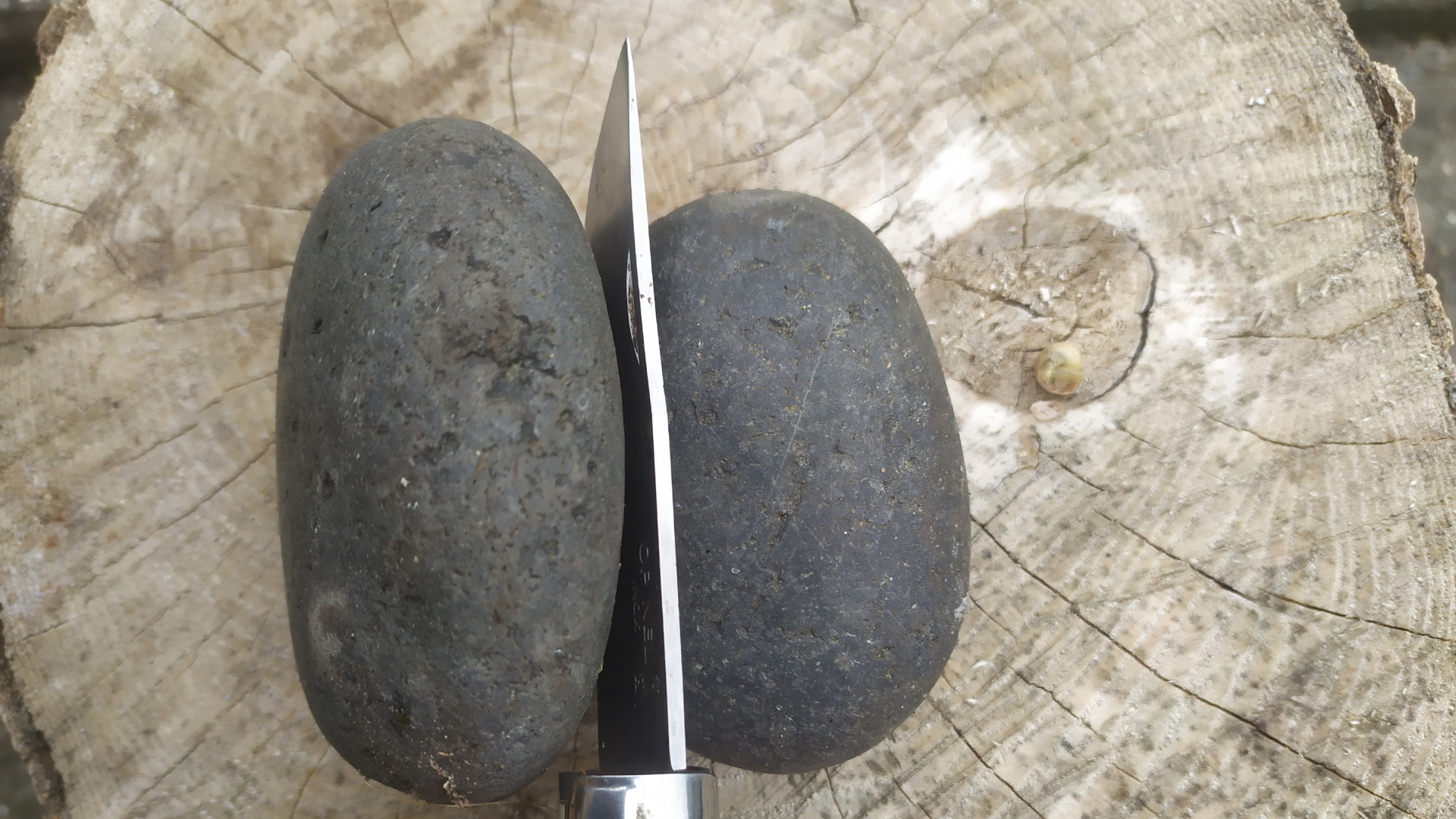
If you’re the kinda camper who prefers to keep costs to a minimum or you simply don’t want to carry more gear than is absolutely necessary, you can sharpen your knife using in-situ sharpeners – i.e. rocks – found at or around your campsite.
All the latest inspiration, tips and guides to help you plan your next Advnture!
The best rocks for sharpening are usually those found in rivers, mainly because the water has smoothed them out and worn the surface down to a very fine grain that’s more suitable for sharpening. Once you’ve sourced a rock, the process for sharpening is exactly the same as with a whetstone.
Another way of sharpening your knife without tools brought from home is to use two roundish rocks of roughly the same size. Holding the rocks together to create a ‘V’, you can sharpen your knife by running the blade back and forth in the groove.
Former Advnture editor Kieran is a climber, mountaineer, and author who divides his time between the Italian Alps, the US, and his native Scotland.
He has climbed a handful of 6000ers in the Himalayas, 4000ers in the Alps, 14ers in the US, and loves nothing more than a good long-distance wander in the wilderness. He climbs when he should be writing, writes when he should be sleeping, has fun always.
Kieran is the author of 'Climbing the Walls', an exploration of the mental health benefits of climbing, mountaineering, and the great outdoors.

